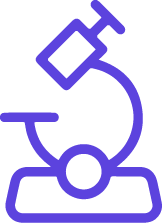Validation has long been a cornerstone of pharmaceutical quality assurance. Yet for many organizations, validation is still seen as a one-time milestone: develop a method, run a study, generate a report, and move on. The recent updates to ICH Q2(R2) and the introduction of ICH Q14 fundamentally shift this perspective. Together, they promote a lifecycle approach that goes beyond the event of validation to ensure that analytical methods remain suitable for intended use throughout their entire lifespan.
Let’s explore what the analytical procedure lifecycle means and why it matters.
What the Analytical Procedure Lifecycle Means
The lifecycle concept recognizes that analytical methods, like manufacturing processes, can drift over time due to changes in equipment, reagents, operators, or even product attributes. Instead of treating validation as a one-time event, the lifecycle framework emphasizes continuous assurance of method performance.
At the heart of this approach is the Analytical Target Profile (ATP). The ATP defines what the method must measure, and the required levels of accuracy, precision, and robustness. It becomes the benchmark for which methods are designed, validated, and monitored. With the ATP in place, companies gain more flexibility: as long as methods meet ATP criteria, modifications can be justified without full revalidation.
Designing robustness also shifts upstream. Rather than being tested as an afterthought, robustness is built into method design using risk-based tools such as Design of Experiments. This ensures methods are more resilient to variability and remain scalable across multiple products, labs, and countries.
The lifecycle framework also requires monitoring performance over time. System suitability trending, control charts, and tracking OOS/OOT results provide evidence that methods continue to meet ATP expectations. Finally, when changes are needed, ICH Q14 enables a risk-based approach: as long as there is compliance with the ATP criteria, changes can be implemented without unnecessary repetition of validation.
Regulatory alignment
Authorities now expect methods to be validated and continuously monitored in line with ICH Q2(R2) and Q14. Companies that adopt this mindset are inspection-ready and avoid findings tied to outdated practices.
Scientific robustness
Methods designed and monitored following a lifecycle model are more reliable, reducing the risk of batch rejections, failed audits, and costly investigations.
Operational flexibility
Lifecycle management supports efficient change control, enabling organizations to adapt methods without revalidating from scratch. This agility is critical for innovation and scale-up.
Digital readiness
LIMS, eQMS, and other digital systems make it possible to track method performance, maintain ALCOA+ compliance, and provide rapid evidence to inspectors. These tools turn lifecycle principles into practical reality.
Strategic value
By ensuring that methods remain suitable for their intended use, companies gain confidence not just at the point of validation, but throughout the entire product lifecycle.
Conclusion
The message from regulators is clear: validation is the beginning, not the end. ICH Q2(R2) and Q14 establish a lifecycle framework where analytical methods are developed, validated, monitored, and adapted to remain continuously fit for purpose.
For organizations, this requires new ways of thinking, new systems, and new partnerships.
At QbD Group, we help companies implement flexible and scalable analytical method validation programs, from protocol design and execution to lifecycle management and regulatory support. Our goal: to ensure your methods remain validated and continuously fit for purpose.
Partner with QbD Group to implement a lifecycle-based validation strategy that keeps your analytical methods continuously fit for purpose.
















%20on%20the%20Environmental%20Risk%20Assessment%20of%20medicinal%20products%20for%20human%20use.png)